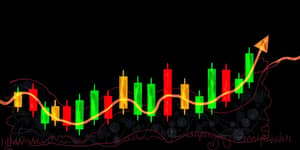
As we move into July 2025, the financial markets have experienced dramatic shifts fueled by technology leadership, evolving monetary policy expectations, and historic seasonal trends. This comprehensive analysis unpacks the latest data, highlights key sector movements, and offers practical insights for navigating the months ahead.
In late June and early July, major U.S. indices delivered significant rallies across major indexes. The Dow Jones Industrial Average rose 0.6%, adding 275.50 points to close at 44,097.77 on July 1, just 2.6% shy of its December 2024 all-time high. Meanwhile, the S&P 500 surged 5% during the final stretch of June, building on its history of July gains—which average 1.4% over the past 35 years and have been positive nine consecutive Julys.
The Nasdaq Composite reinforced the tech-driven advance by achieving a new all-time intraday high of 20,418.31 and settling at 20,369.73, up 0.5%. These benchmarks underline a market environment where innovation-led stocks continue to set the tone for broader equity performance.
Investor confidence has been bolstered by several overlapping catalysts, creating a favorable backdrop for equities. Key among these drivers is renewed hopes for a major U.S.-China trade agreement, which has reignited appetite for risk assets across continents.
Collectively, these factors have created an upbeat but nuanced market tone, with bouts of volatility reminding investors to remain vigilant.
The recent advances have been concentrated in a handful of dynamic sectors. Technology and semiconductor firms stand out, led by NVIDIA’s relentless ascent and optimism around AMD’s product roadmap. Legacy software players such as Oracle are also drawing attention for their pivot toward AI-driven solutions.
In cybersecurity, companies like Zscaler and Snowflake are lauded as “pick-and-shovels” plays, capitalizing on growing enterprise demand for robust defense architectures. Unexpected momentum has also surfaced in select consumer entertainment names—Dave & Buster’s, for example, is emerging from previous headwinds.
The financial sector contributed meaningfully to broad-based gains. Goldman Sachs, among the top Dow boost- ers, advanced over 2.5%, demonstrating that banks can still play offense when deal activity and market liquidity align.
As July unfolds, several pivotal themes will shape market trajectories. The upcoming corporate reporting season volatility is poised to inject fresh catalysts, with earnings surprises—both positive and negative—likely to spark rapid price swings.
Seasonality also suggests that volatility may pick up in July; historically, the VIX rises by an average of 5% during this month. While past performance doesn’t guarantee future results, such patterns underscore the importance of risk management in the weeks to come.
Beyond equities, commodities and alternative assets exhibit their own July-specific tendencies. According to decades of data, gold and oil often record strong performance as summer demand and safe-haven flows converge. Investors seeking ballast might consider modest allocations to these sectors, mindful of supply dynamics and geopolitical catalysts.
In particular, bullish performance in July for gold has historical backing, making it an attractive hedge against equity volatility and currency fluctuations.
Staying informed is essential in this fast-moving landscape. Leading outlets such as Financial Times, CNBC, CNNMoney, and Money Morning provide real-time updates, expert analysis, and actionable insights. Whether you’re a seasoned portfolio manager or a retail investor, curating a blend of diversified news sources can enhance decision-making quality and responsiveness.
In summary, the onset of July 2025 has brought a blend of robust gains and heightened rotation across global markets. With technology and AI at the forefront, combined with supportive monetary policy signals and seasonal patterns, investors have a toolkit of themes to monitor. Yet, as history reminds us, volatility and unexpected events can shift the narrative quickly. Prudent diversification, disciplined risk controls, and timely information will remain the cornerstones of successful market participation in the weeks ahead.
References













